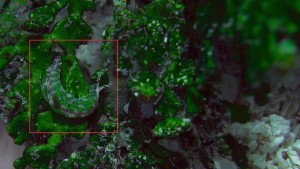Sea slug sniffs out seaweed’s chemicals, then stalks its prey

An underwater sea slug has evolved chemical foraging and defense abilities that are functionally identical to those of terrestrial insects, despite being unrelated to their land-based counterparts and living in vastly different habitats for 400 million years.
“Specialized herbivores on land and sea appear to make a living in similar ways,” says University of Maine researcher Doug Rasher, whose team’s findings have been published in the journal “Proceedings of the National Academy of Sciences.”
In seagrass beds off the Florida Keys, the sea slug Elysia tuca hunts its prey, the seaweed Halimeda incrassata, by honing in on chemical cues the seaweed emits, says the postdoctoral research associate at the Darling Marine Center.
Read more at UMaine News
